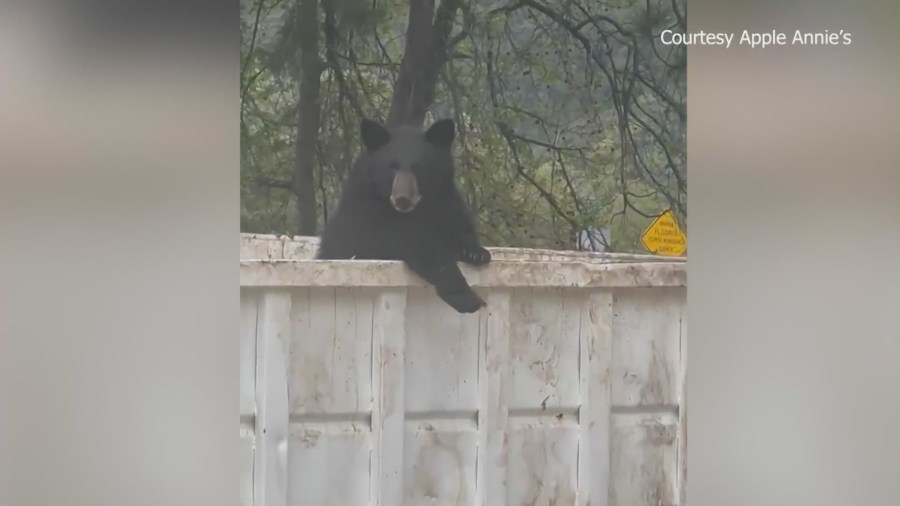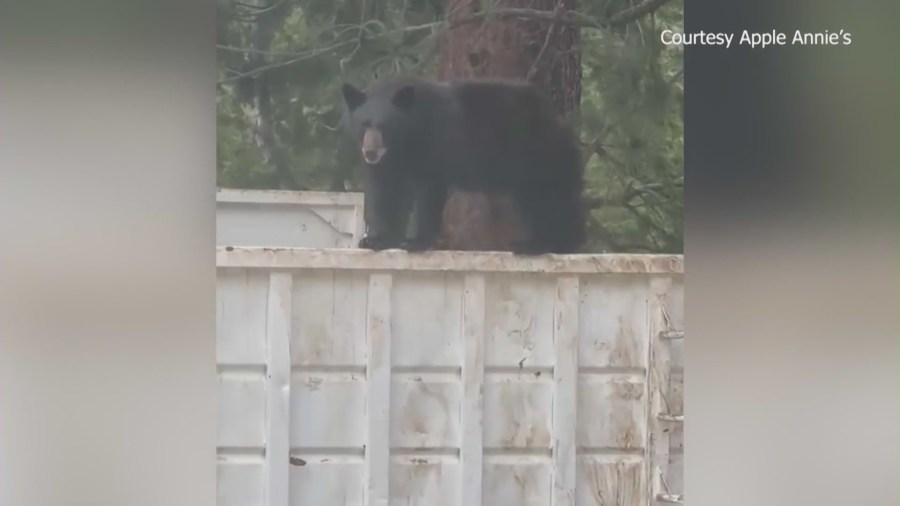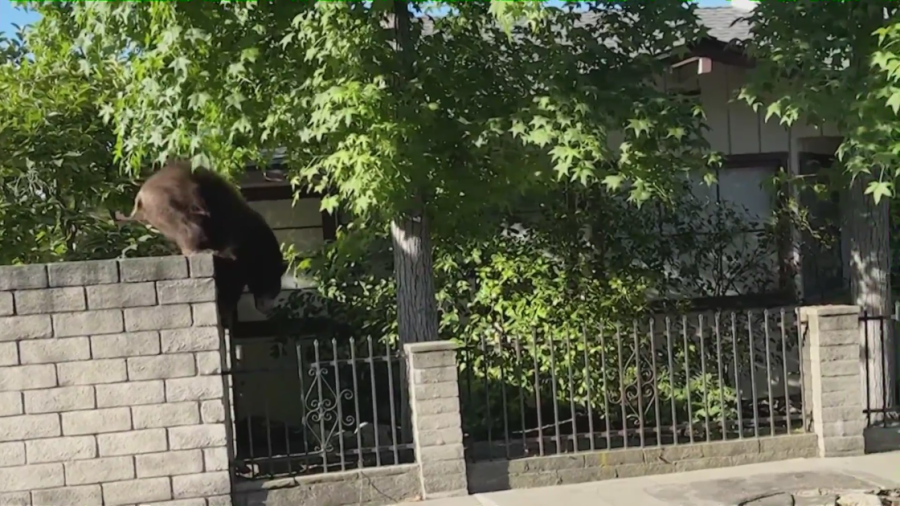Residents are angry after a bear was reportedly shot in the San Bernardino mountains earlier this week.
Amid increased bear sightings across Southern California, encounters with wildlife remain a danger to both humans and animals.
Although the shooting is under investigation, neighbors suspect someone was feeding the bear before it was shot. The California Department of Fish and Wildlife confirmed they’re investigating the shooting, but the bear has not yet been found.
In the San Bernardino mountains, black bear sightings are commonplace among neighborhoods, especially as the weather heats up.
“We see them all the time,” said Trisha Ramsey, an Angelus Oaks resident. “They’re regulars over here. They live here.”
Ramsey shared a video of a young bear she spotted while driving on State Route 38 last Monday. On Thursday morning, a bear was seen on video wandering around a Sierra Madre neighborhood.
Last week, two orphaned bear cubs were spotted in Forest Falls and taken to a wildlife sanctuary after their mother was found dead.
Although it’s unclear how the mother bear died, the question of whether humans and bears can peacefully coexist remains an issue for concerned residents.
Ramsey said for her, it’s easy to live with wildlife as long as the necessary precautions are put into place.
“There are bite marks all over, scratches,” Ramsey said while describing the locked lid of her trash can. “They try to get in, but they can’t.”
Wildlife officials said safeguarding the things that would attract bears in the first place is critical — most notably, food in trash cans. It’s advisable to roll out trash cans on the day of collection and not the day before to prevent bears from rummaging.
When reports of the shooting were made public, many neighbors had been speculating that in the moments leading up to the shooting, a newer resident was feeding the bear before it allegedly threatened a child and a dog.
“Our folks did respond and have been working and investigating for the past few days and even also today,” said Capt. Patrick Foy with CDFW’s Law Enforcement Division. “It’s something we’re taking very seriously but at this point, we do not have the bear in hand.”
Foy said although they can’t share more details of the investigation, they are working to gather information from residents.
Ramsey had just recorded a video about an hour before the reported shooting and believes her video shows the bear in question.
“We were getting ready to leave and I had the windows open and I heard the shot,” Ramsey recalled. “It’s heartbreaking. I’m honestly going to cry because I’m used to seeing them walk by. You care about them. If you live up here, you should care about them and you should learn about them.”
Along with ensuring trash cans are locked when placed outside, experts also advise cleaning barbecue grills immediately after use and refraining from feeding pets outside.
“They need to do whatever is necessary to prevent attracting bears in the first place,” Foy said. “Our mission is to help people and wildlife better coexist.”
If a bear is spotted it’s strongly advised to keep your distance and avoid feeding them.
Fish and wildlife experts offered these general tips on limiting unwanted bear encounters:
Use simple, effective exclusion methods:
-Keep doors and windows closed and locked when unoccupied.
-Bring pets inside at night. Keep livestock in secure pens at night.
-Eliminate access to potential den sites (e.g., crawl spaces under decks).
-Store BBQ grills in a secure shed or garage and keep them clean when not in use.
Use simple, effective deterrent methods:
-Install motion-activated lights, noise or alarms.
-Install electric fencing around chicken coops and animal enclosures.
-Install electric mats (‘unwelcome mats’).
-Deploy sensory deterrent where potential access to attractants may occur (e.g., place ammonia in a shallow bowl).
Use bear-proof containers:
-Always keep trash, recycling, and compost in secure bins.
-Wait to put out the trash until the morning of collection.
-Clean garbage and recycling bins with bleach or ammonia.
-Remove unsecured trash, food, and strongly scented items (e.g., sunscreen) from vehicles and yards.
Use “wildlife-smart” landscaping:
-Remove bird feeders from the yard.
-Plant native flowers to attract birds instead.
-Do not feed other wildlife – this will attract bears.
-Pick ripe fruit off trees and promptly collect any fruit that falls off trees.


























